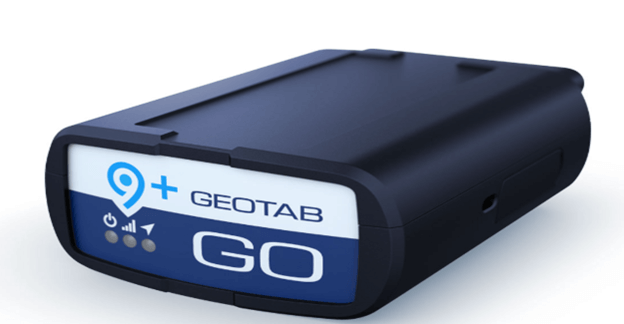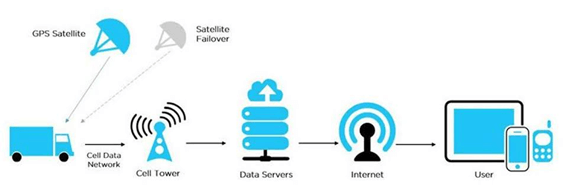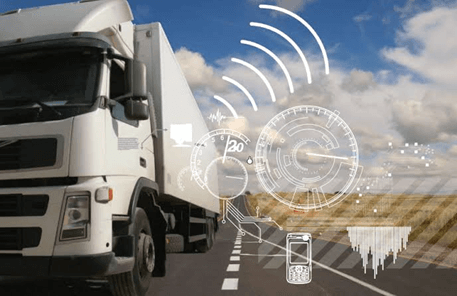Telematics are highly useful in fleet management, improving safety, reducing fuel consumption, and saving on operating costs. However, sometimes, errors in using telematics can negatively affect fleet performance. For instance, entering wrong data or tracking the wrong vehicles may lead to high fuel usage, increased costs, and shorter vehicle lifetimes.
For example, inferior driving habits can result in up to 35% more fuel consumption than good driving. Therefore, to improve fuel efficiency and overall fleet performance, we’ll share some common telematics oversights in fleet management and provide their solutions.

What is Telematics and Why It’s Crucial for Fleet Management?
Fleet telematics is a process that combines telecom and data technology to track and control a vehicle in real-time. It provides insightful values through GPS, onboard diagnostics (OBD), and Internet of Things (IoT) tools that integrate into fleet management systems:
- GPS—It locates a vehicle’s location in real-time, which helps fleet managers track their fleet’s movement and plan efficient routes to ensure on-time delivery.
- Onboard Diagnostics (OBD)—It collects data on engine health, fuel use, and performance to detect and address problems early on.
- Internet of Things (IoT)—It connects devices to cloud systems to collect and analyze data in real-time for decision-making.

Telematics is important in fleet management for the following reasons:
- Fuel Savings – Telematics identifies all habits that waste fuel, like idling or aggressive driving, which saves fleets about 30% of fuel costs.
- Route Optimization – Real-time traffic updates and route suggestions will reduce travel distances, saving time and fuel.
- Driver Performance Management – Records unhealthy driving patterns that raise accident rates and insurance premiums and enables targeted training for drivers to reduce such behaviors.
- Maintenance Alerts – Provides notification on maintenance schedules and other problems likely to cause a vehicle to break down.

Incorporating telematics in a fleet management system means getting real-time data that you can utilize to enhance your fleet performance and productivity. Telematics also facilitates the control of fuel through usage patterns. This not only saves on unnecessary spending but also decreases greenhouse emissions as well. Also, telematics reduces downtime by observing the need for vehicle maintenance and thus, keeping them operational.
Common Telematics Mistakes and How They Impact Fleet Management
Common telematics mistakes in fleet management include incorrect installation, ignoring valuable data insights, overwhelming users with too many metrics, failing to integrate with other systems, over-relying on data alone, insufficient driver training, and weak security protocols. Following below are more information about common telematic mistakes, how they affect fleet management, and how to resolve them:
1. Incorrect Telematics Installation
Incorrect telematics installation by unskilled workers can lead to inaccurate data and system breakdowns. For example, the telematics control unit (TCU) will fail to give input to the engine control module (ECM) for fuel usage or engine malfunction because links were not established properly.
An issue like this will result in higher costs, unnecessary repairs, and operational disruptions. To prevent these problems from happening, fleets should rely on professional installers and conduct regular system checks.
2. Ignoring Telematics Data Insights
The biggest mistake in fleet management is gathering telematics data without analyzing or acting on it. Ignoring insights will mean missed opportunities to optimize fuel use or address maintenance needs, resulting in increased costs, unplanned downtime, and service delays.
To avoid this, fleet managers should follow some suggestions, such as regularly checking telematics reports, establishing KPI benchmarks, implementing findings, and providing reports to drivers. They should also constantly improve fleet fueling management through data-driven strategies.
3. Overloading Telematics with Too Many Metrics
Tracking too many telematics metrics causes information overload and confusion. This slows decision-making, increases data misinterpretation, and frustrates teams. To avoid this, focus on key metrics like fuel usage, driver behavior, and route efficiency.
Monitoring these critical areas also helps detect fuel waste, improve driving habits, and optimize routes. This, in turn, ascertains better performance, cost savings, and smoother operations without overwhelming your team with unnecessary data.
4. Lack of Integration with Other Fleet Management Systems
Most companies make the mistake of not incorporating telematics fleet management systems with maintenance tracking, human resources, fuel cards, and route planning software. This results in management failures and complicated administrative work that inevitably leads to additional costs and inefficient processes.
For example, separate systems may delay maintenance alerts or obscure fuel usage patterns. To resolve this, you should use compatible platforms, implement APIs for seamless data sharing, train staff, and continuously optimize integrated systems for better efficiency.
5. Over-Reliance on Telematics Data
Another mistake that many organizations make with their enterprise fleet management is focusing exclusively on telematics data without considering weather, traffic signals, and road conditions. Such an approach can lead to the overshadowing of essential information, inadequate evaluation, and flawed decisions.
For example, fuel inefficiencies might be wrongly attributed to drivers, overlooking bad roads or heavy traffic. To address this, fleet managers should combine telematics with external data, driver feedback, and advanced tools for a more accurate and holistic approach to fuel management.
6. Poor Driver Training and Education
Training drivers poorly regarding interaction with telematics systems can result in poor utilization of technology. It can also lead to poor data interpretation hence, which in turn causes irresponsible driving behavior, increased fuel consumption, and safety risks.
To fix this, you should offer training on telematics use, fuel-efficient driving, and safety practices. Regular feedback and incentives can also reinforce good habits, improving fleet efficiency, reducing costs, and increasing driver safety.
7. Neglecting Security and Privacy
Neglecting telematics data security and privacy risks breaches that expose sensitive data, leading to financial losses and harming reputation. Moreover, the absence of security measures can lead to stolen driver and vehicle information and expensive fines.
To avoid this use encryption, implement strict personnel controls, perform frequent security reviews, and educate users on security features. Moreover, maintain an incident response plan to address potential breaches effectively.
8. Failure to Set Clear Goals and KPIs
Without clear goals and KPIs, decision-making becomes reactive, improvement areas go unnoticed, and accountability is weak. To address this, define measurable objectives like fuel efficiency or driver safety, track relevant KPIs such as fuel use or downtime, and regularly review progress. Clear communication of these goals will ascertain team alignment and drive continuous fleet performance improvements.
9. Delayed System Updates or Software Upgrades
Delaying telematics software updates can cause system vulnerabilities, inaccurate data, reduced safety, and missed efficiency gains. Outdated software may also lead to reporting errors, ineffective safety alerts, and missed operational enhancements.
To avoid these issues, schedule regular updates, utilize new features to improve efficiency, and train staff on system changes. Also, monitor system performance after updates to ascertain optimal functionality.

Best Practices to Avoid Telematics Mistakes
While finding solutions to resolve telematics mistakes in fleet management is a must, there are some best practices you can follow to improve the solutions’ effectiveness:
1. Choose the Right Provider
Pick a telematics provider with strong customer support, seamless system integrations, and a reliable reputation.
2. Train and Involve the Entire Team
Make sure all working staff have received adequate training on using telematics. Allow them to ask questions and participate in discussions on how it improves their work.
3. Focus on Key Performance Indicators (KPIs)
Focus on important KPI indices such as fuel efficiency, driver behavior, and maintenance schedules to make better decisions and improve performance.
4. Regularly Update And Maintain Systems
Keep software and hardware updated with new features, security patches, and routine performance checks to ensure reliability.
5. Monitor and Act on Data Trends
Analyze telematics data regularly, address issues like route inefficiencies or unsafe driving, and foster ongoing improvement with team feedback.

Key Takeaways
Mistakes in telematics fleet management, like incorrect installation, ignoring data insights, and lack of integration, can lead to higher costs, lower efficiency, safety risks, and missed opportunities. Over-reliance on data, overloading with metrics, poor driver training, neglecting security, and not setting goals are also some common telematics mistakes.
To resolve them, assess your telematics practices. Are you analyzing data, training drivers, and securing information? By addressing these issues, you can maximize telematics benefits, such as better fuel economy, safety, and reduced costs.
Cut Fleet Mistakes
Schedule Reliable Fueling Today
Fuel Logic helps you manage your fleets fuel 24/7 with fleet management fueling —reach us anytime for your fleet management needs.
FAQs (Frequently Asked Questions)
Q1: What is the biggest challenge in fleet management?
The biggest challenge in fleet management is balancing rising costs with efficiency and compliance. Fleet managers have to go through handling high fuel, proper route planning, maintenance, and labor expenses while meeting safety and regulatory standards.
Q2: How accurate is telematics?
Telematics systems are relatively accurate, offering real-time data on vehicle location, speed, fuel use, and driver behavior. However, their accuracy depends on hardware and software quality, and data transmission frequency. Modern devices use GPS for precise tracking in telematics systems, though factors like signal interference or calibration issues can sometimes impact performance.
Q3: What is the biggest technological issue with telematic performance?
The primary tech challenge impacting telematics performance is a lack of system interoperability, which leads to information isolation. Outdated software will also result in some vulnerabilities and inaccurate telematics data.
Q4: What is the difference between telemetry and telematics?
Telemetry can be described as a procedure for acquiring information from distant sources to monitor fleets. Telematics, on the other hand, includes telemetry but goes further than that and incorporates analytical and decision-making systems that make it useful for managing fleets.
Q5: What is the most critical aspect of fleet management?
The most critical aspect of fleet management encompasses optimizing routes, controlling fuel use, monitoring drivers, and scheduling maintenance to reduce downtime. Telematics collects data to help make decisions, increase efficiency, and decrease expenditures in fleet management.
Solve Common Telematics Issues With a Tailored Fleet Management Solution By Fuel Logic
Fuel Logic offers a tailored fleet management system for your organization that can assist you with resolving common telematics concerns. Whether you need a hands-on system or a solution that integrates with your existing software and fuel cards, we optimize fuel efficiency and budget control for your fleet.
With automation and real-time monitoring integrated into our solution, we also save you time and money, prevent fuel theft, and ascertain transparency. In addition, we provide direct gasoline delivery and fuel delivery services at various locations, even remote ones, whenever you need them.
Call us to learn more about our fuel fleet management solutions, or contact us to order fuel delivery for your entire fleet at a place of your choosing for mobile fueling!








